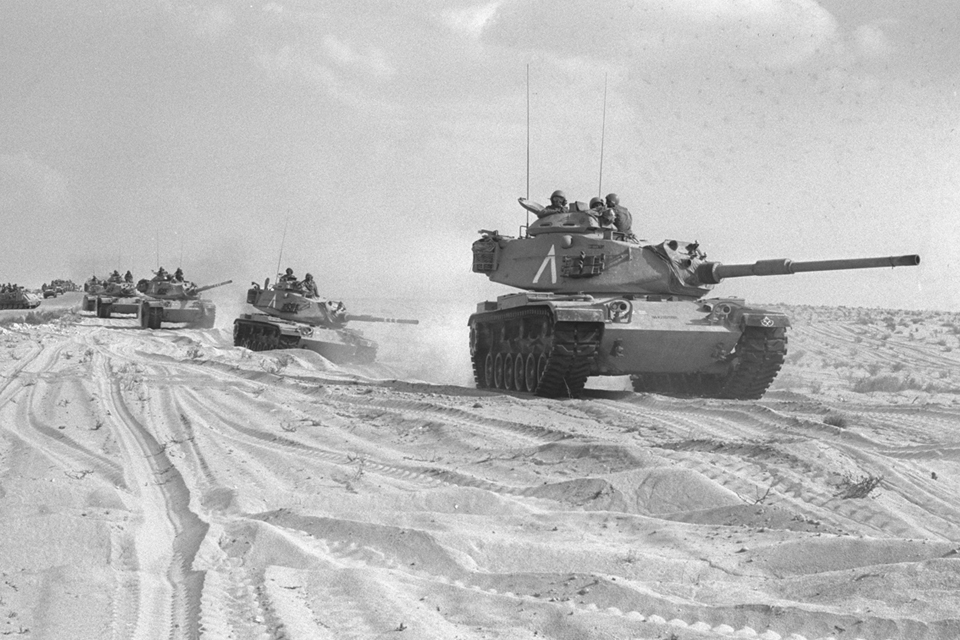
It has been noted throughout the history of human conflict that some armies have consistently fought more effectively on the battlefield than others. The armies of Sparta in ancient Greece, for example, have come to epitomize the warrior ideal in Western societies. Rome’s legions have acquired a similar legendary reputation. Within armies too, some units are known to be superior combatants than others. The U.S. 1st Infantry Division, the British Expeditionary Force of 1914, Japan’s Special Naval Landing Forces, the U.S. Marine Corps, the German 7th Panzer Division, and the Soviet Guards divisions are among the many superior fighting forces from history.
Trevor Dupuy found empirical substantiation of this in his analysis of historical combat data. He discovered that in 1943-1944 during World War II, after accounting for environmental and operational factors, the German Army consistently performed more effectively in ground combat than the U.S. and British armies. This advantage—measured in terms of casualty exchanges, terrain held or lost, and mission accomplishment—manifested whether the Germans were attacking or defending, or winning or losing. Dupuy observed that the Germans demonstrated an even more marked effectiveness in battle against the Soviet Army throughout the war.
He found the same disparity in battlefield effectiveness in combat data on the 1967 and 1973 Arab-Israeli wars. The Israeli Army performed uniformly better in ground combat over all of the Arab armies it faced in both conflicts, regardless of posture or outcome.
The clear and consistent patterns in the historical data led Dupuy to conclude that superior combat effectiveness on the battlefield was attributable to moral and behavioral (i.e. human) factors. Those factors he believed were the most important contributors to combat effectiveness were:
- Leadership
- Training or Experience
- Morale, which may or may not include
- Cohesion
Although the influence of human factors on combat effectiveness was identifiable and measurable in the aggregate, Dupuy was skeptical whether all of the individual moral and behavioral intangibles could be discreetly quantified. He thought this particularly true for a set of factors that also contributed to combat effectiveness, but were a blend of human and operational factors. These include:
- Logistical effectiveness
- Time and Space
- Momentum
- Technical Command, Control, Communications
- Intelligence
- Initiative
- Chance
Dupuy grouped all of these intangibles together into a composite factor he designated as relative combat effectiveness value, or CEV. The CEV, along with environmental and operational factors (Vf), comprise the Circumstantial Variables of Combat, which when multiplied by force strength (S), determines the combat power (P) of a military force in Dupuy’s formulation.
P = S x Vf x CEV
Dupuy did not believe that CEVs were static values. As with human behavior, they vary somewhat from engagement to engagement. He did think that human factors were the most substantial of the combat variables. Therefore any model or theory of combat that failed to account for them would invariably be inaccurate.
NOTES
This post is drawn from Trevor N. Dupuy, Numbers, Predictions and War: Using History to Evaluate Combat Factors and Predict the Outcome of Battles (Indianapolis; New York: The Bobbs-Merrill Co., 1979), Chapters 5, 7 and 9; Trevor N. Dupuy, Understanding War: History and Theory of Combat (New York: Paragon House, 1987), Chapters 8 and 10; and Trevor N. Dupuy, “The Fundamental Information Base for Modeling Human Behavior in Combat, ” presented at the Military Operations Research Society (MORS) Mini-Symposium, “Human Behavior and Performance as Essential Ingredients in Realistic Modeling of Combat – MORIMOC II,” 22-24 February 1989, Center for Naval Analyses, Alexandria, Virginia.

Unfortunately not many people share this concept and formula of combat effectiveness/CEV. Want to start a flame war, may it be on an academic level or simply in a Bar or forum?
Quote CEVs.
Furthermore, development levels of individual nations play a large role (notably on a higher level) in tactical disparity. I believe this is far more important than most people realize (at least I came to this conclusion from my studies), but they do not dictate the outcome of wars.
There is no question that the skills involved in running a modern industrial (or post-industrial) society are helpful in running an army. I think this is why certain countries have consistently been good across several decades.
Unfortunately, we never really explored in any depth what made up combat effectiveness and why it differed between units (or nations). Never had the budget to do so.